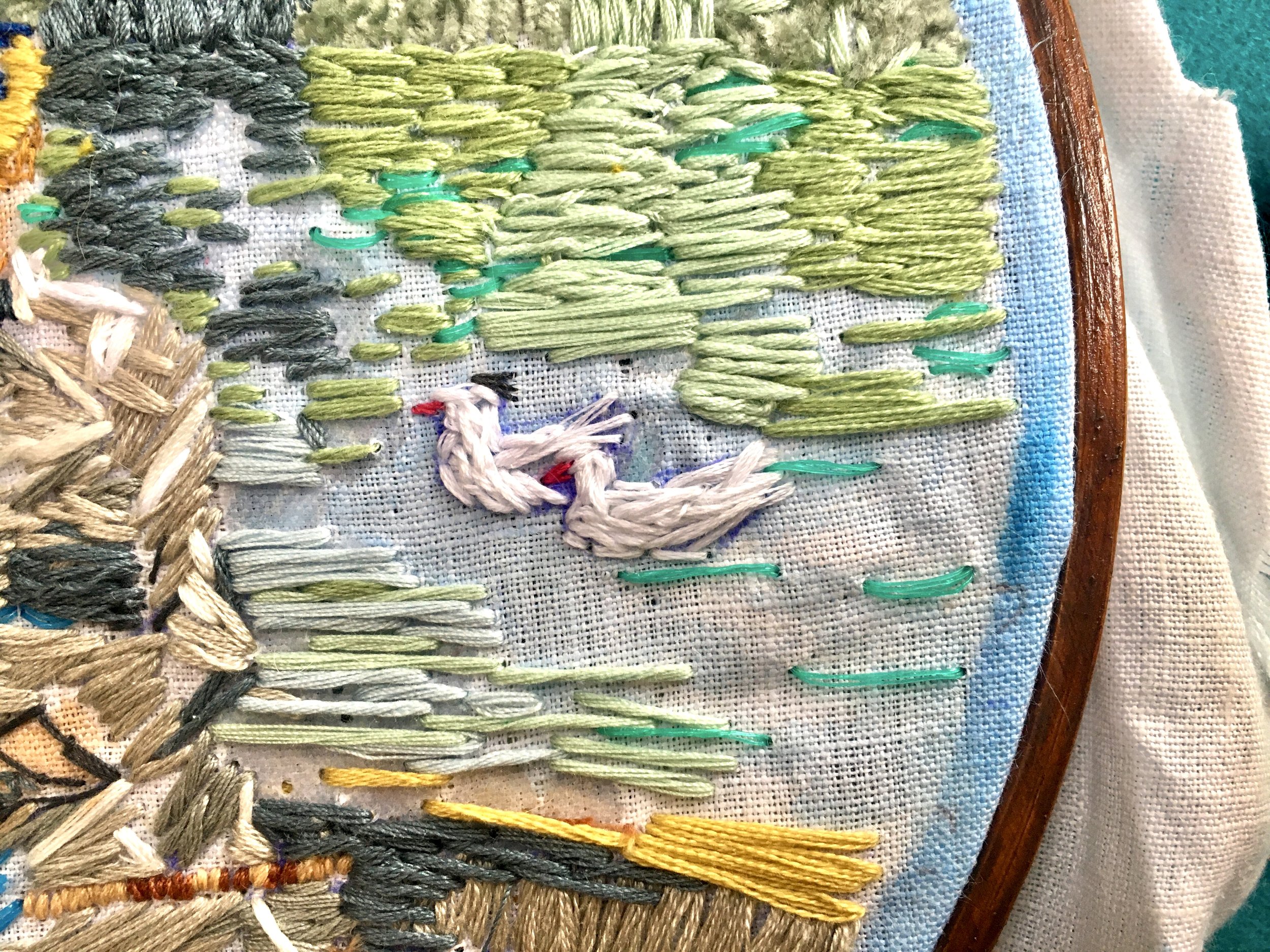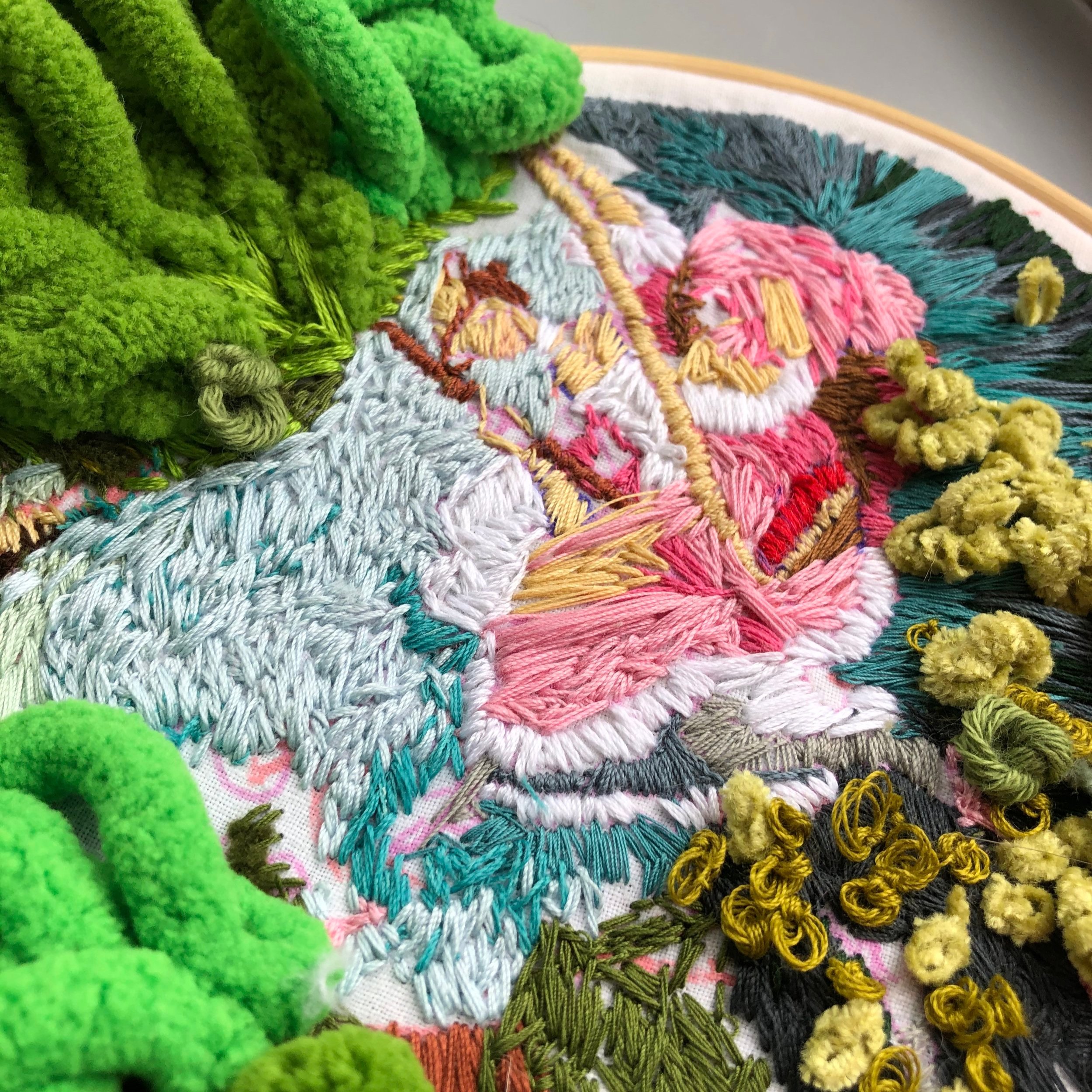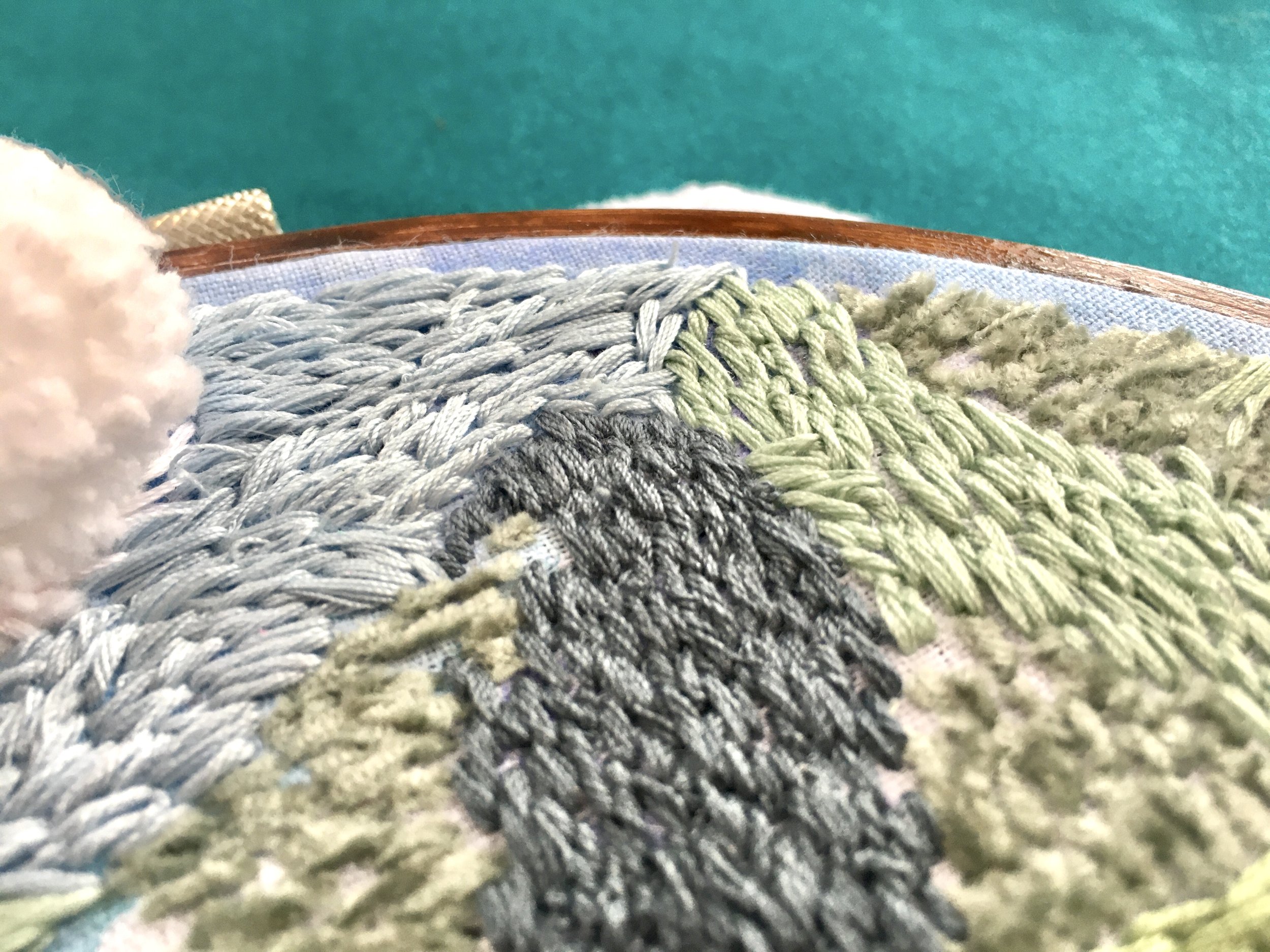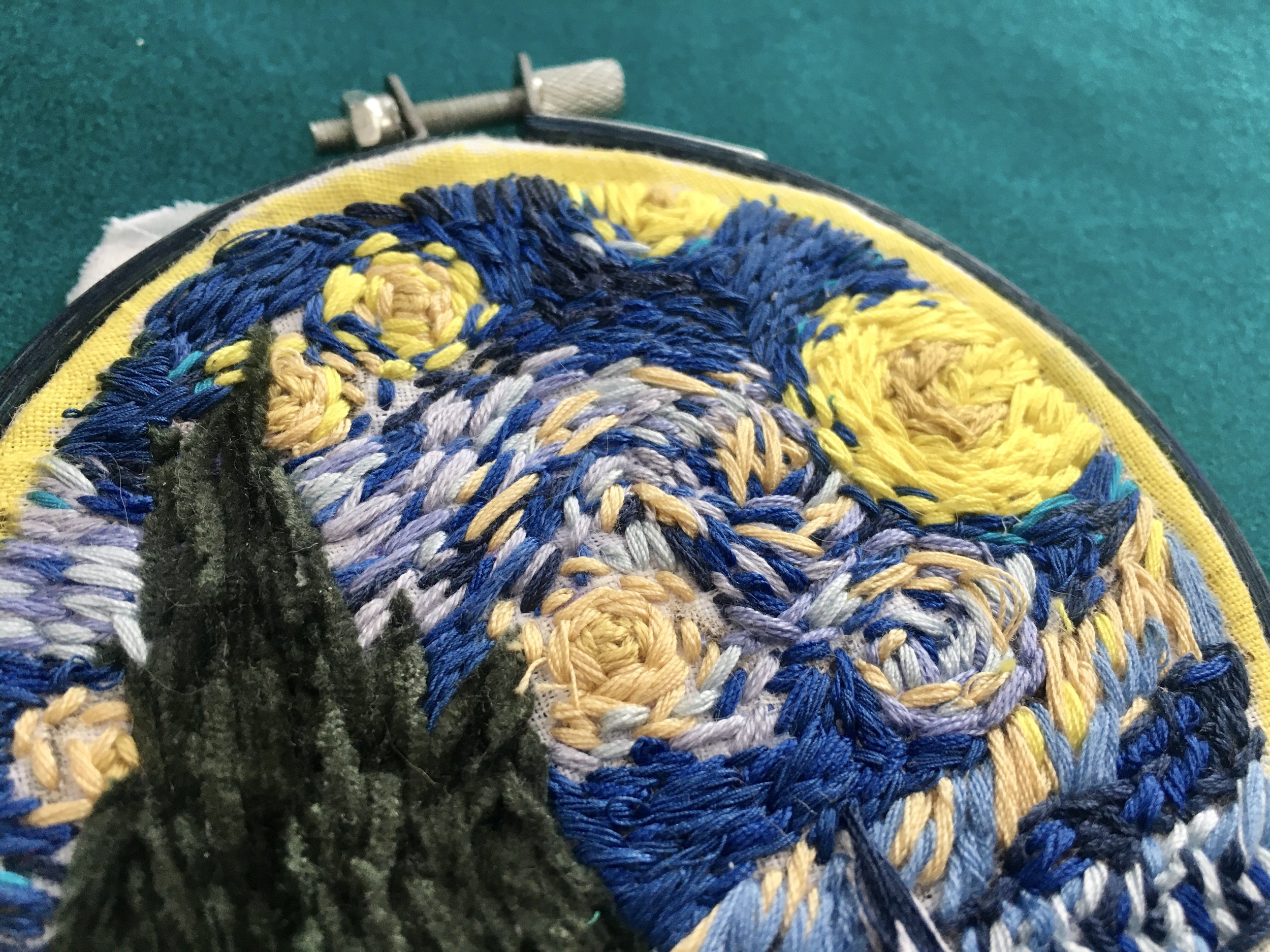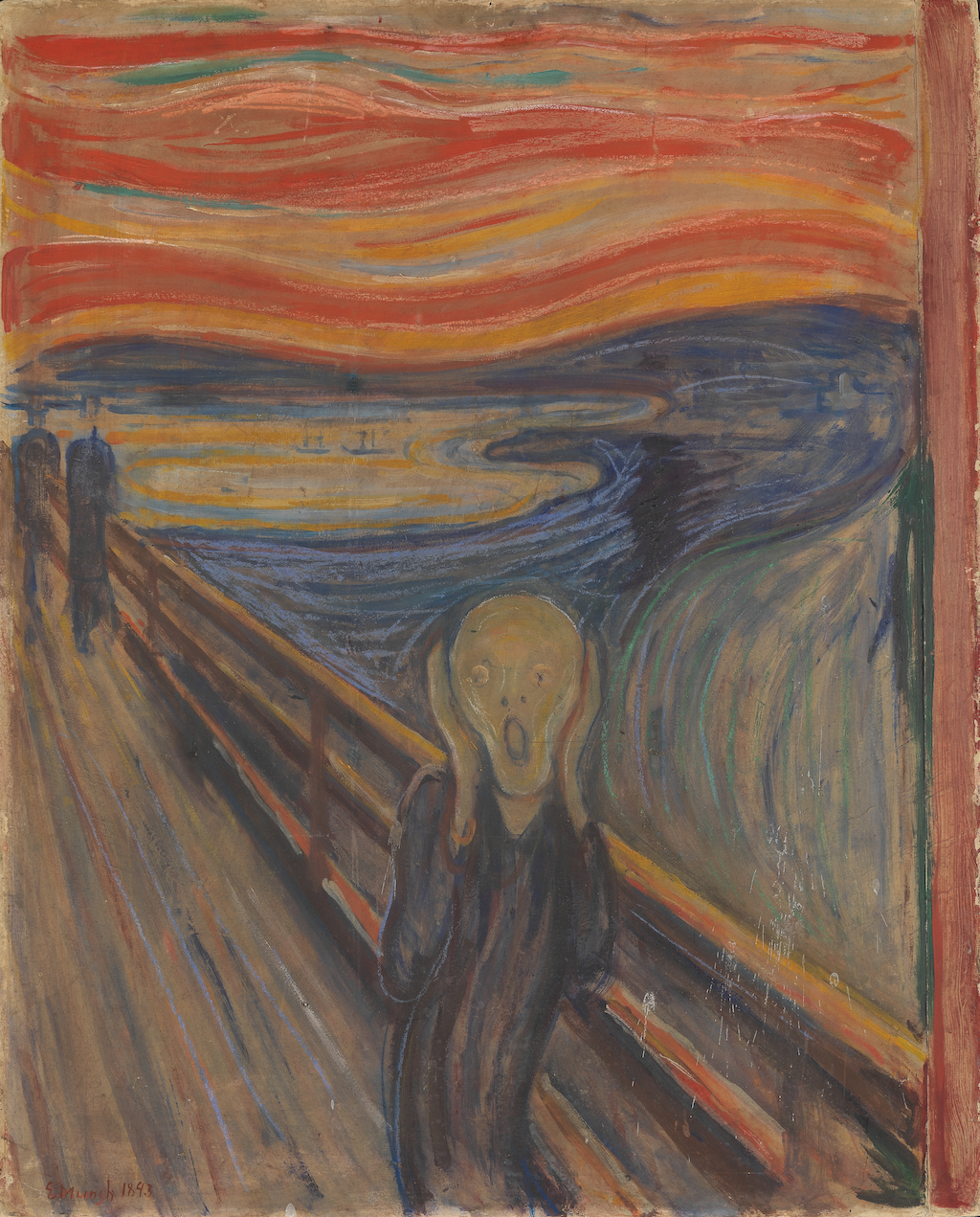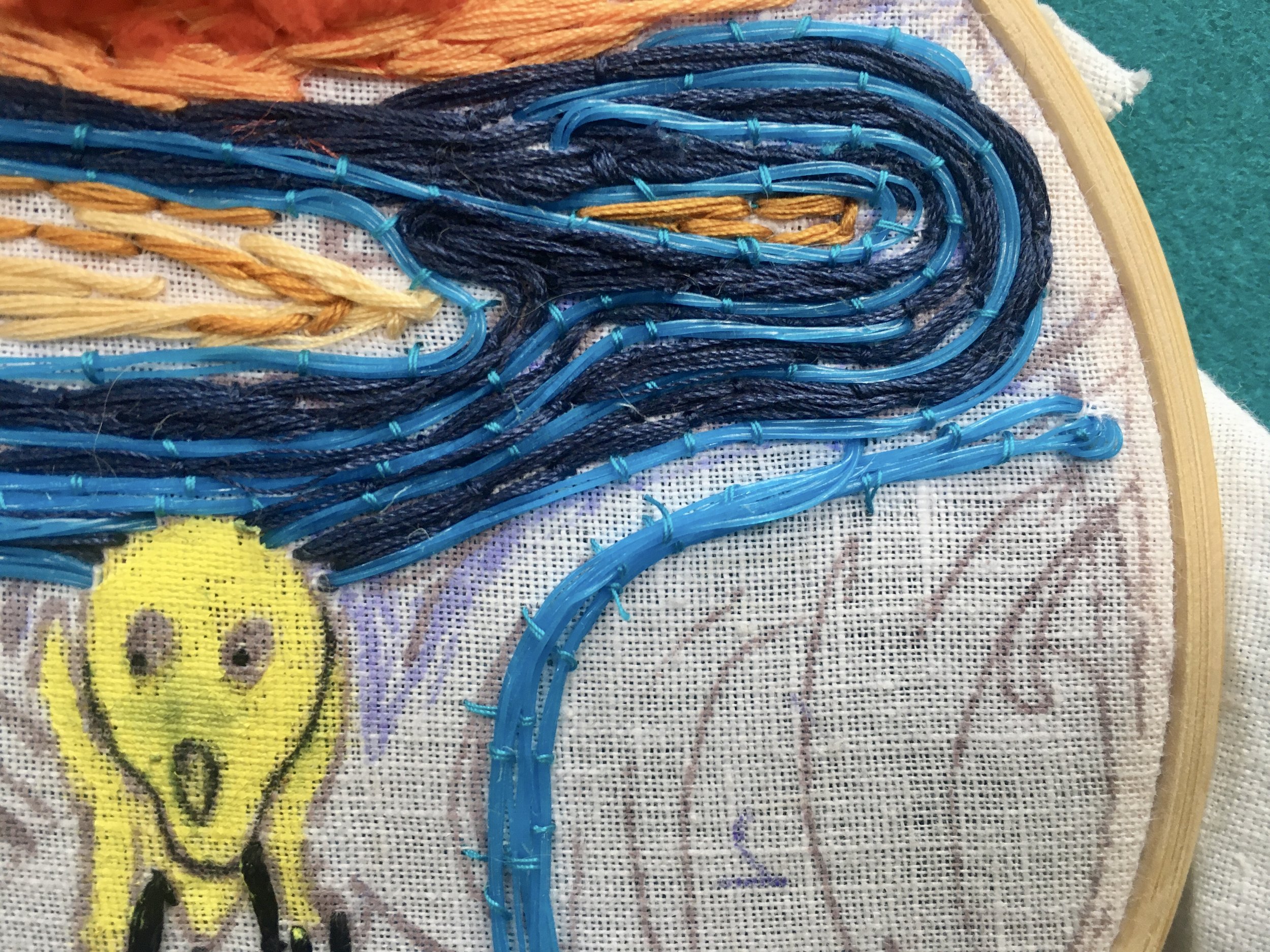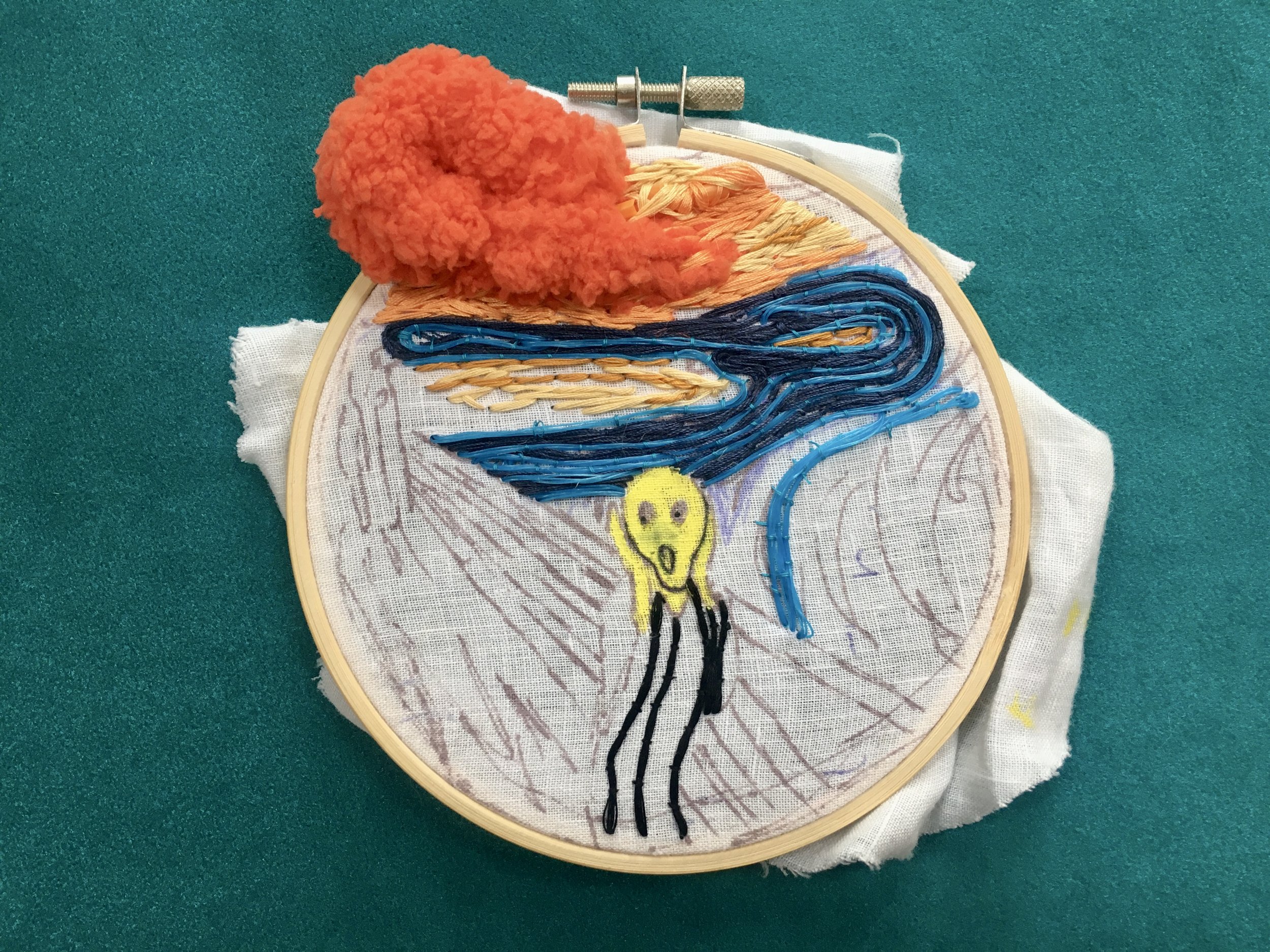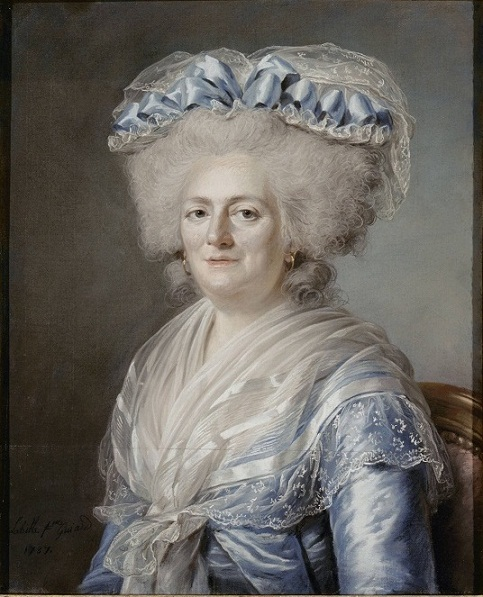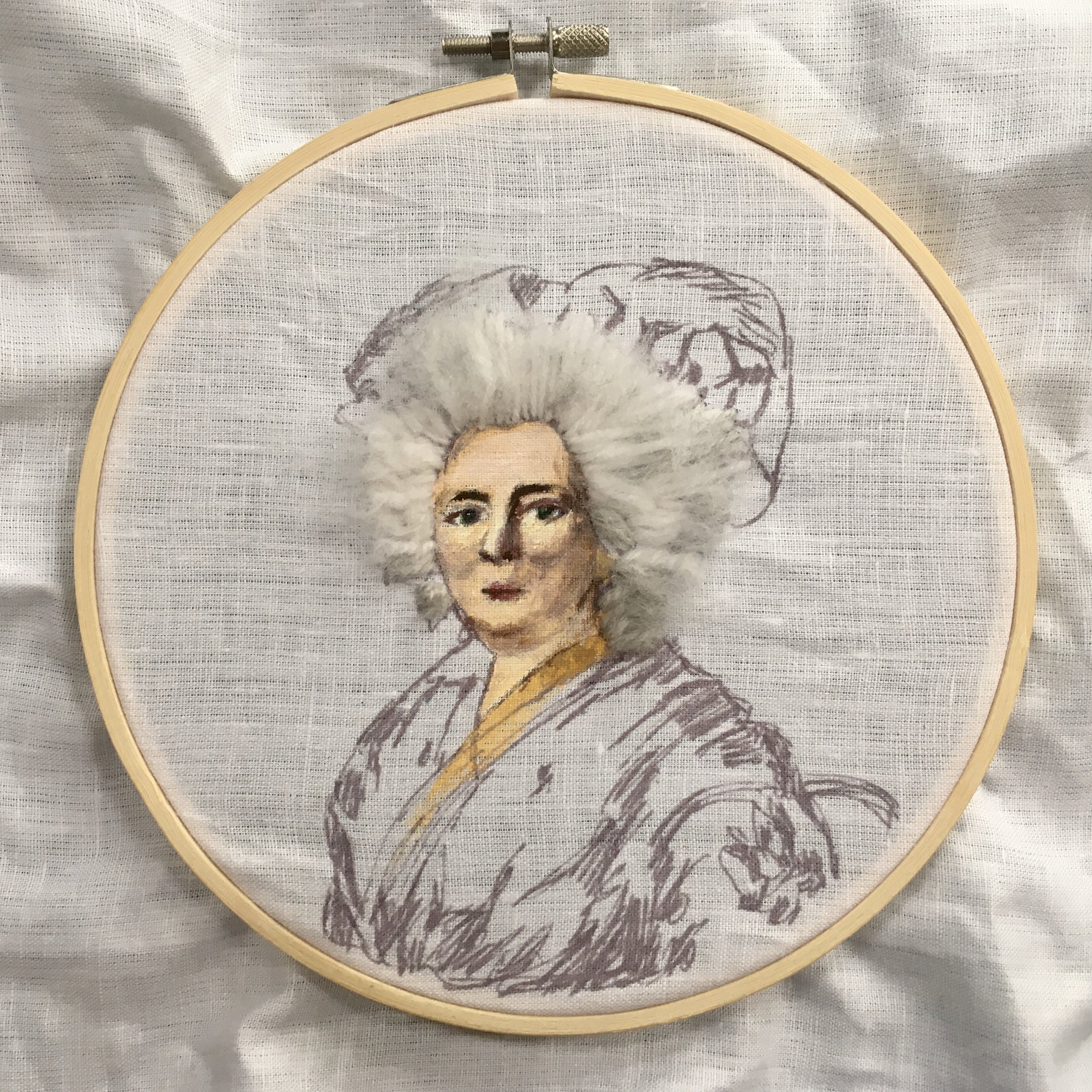Halfway into the Old Mistress project, Penny is deep in the creative phase and busy with her embroidery. She has chosen to work on all of the initial pieces concurrently, as this makes it easier to get ‘peer reviews’ from fellow artists as she goes along.
Artists who have reviewed Penny’s work and offered constructive feedback and suggestions include Wesh textile artist Judith Musker Turner, who has been a mentor and collaborator for some time. Penny has also received support from one of her biggest influences, Victoria Rose Richards, a pioneer of landscape embroidery who talks openly about the intersections of her autism and her art; and long-time creative peer and supporter Fin McAllister.
Detail of Berthe Morisot’s Summer’s Day (1879), and Penny’s in-progress rendition.
Describing the creative process, Penny feels she is emerging from the ‘messy middle’ - a period of challenges that have provided a steep learning curve and tested her confidence. These include extending the project deadlines to accommodate illness, finding technical solutions to problems with materials, and overcoming self-doubt in the midst of making Berthe Morisot’s ‘Summer’s Day’ - a large embroidery requiring thousands of stitches to create. “This one is definitely pushing me out of my comfort zone”, she explains.
For the majority of this work, Penny uses a combination of long and short stitch and satin stitch to build up her images. This simple repertoire allows her to practice freestyle embroidery and create a painterly effect with the thread; long and short stitches in particular enabling her to blend colours, imitating the way a painter might on canvas.
Penny has also been experimenting with new approaches, including learning a new technique called ‘couching’ (a suggestion of Judith’s). Here, thick threads are layered in patterns, and then stitched into place - perfect for creating the vivid swirling skies of Edvard Munch’s ‘The Scream’ (1983), shown below. Penny experimented with using plastic thread from old fishing ropes found at the beach and found their stiff texture ideal for this piece.
In her embroidery of Adélaide Labille-Guiard’s ‘Madame Victoire’ (1787), Penny found that the upcycled acrylic yarn used for the madame’s hair was too fluffy and wild. Or as Penny puts it: “She looks like she’s had an electric shock! So I’m going to add fine merino wool to tame and shape it.”
For the finer details - particularly faces - Penny prefers to paint directly onto the canvas: “Embroidered faces can end up with too much texture, whereas with paint, I can have more control over these tiny details. Plus I just love the combination of having both paint and stitch within the hoop.”
Beyond the embroidery Penny has also been busy being filmed at home for the first project video from Tiny House Creatives, which will offer a peek into her life as an artist with disabilities. A second video that explores her embroidery art is now in the works.
Don’t forget to follow Penny on Instagram and TikTok @pennytristram for more project updates!

